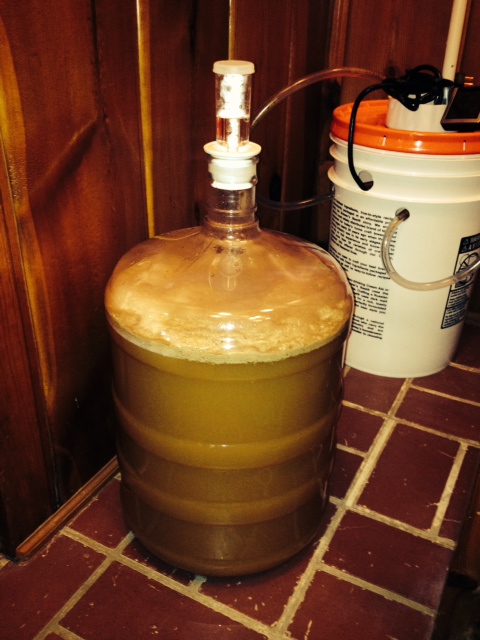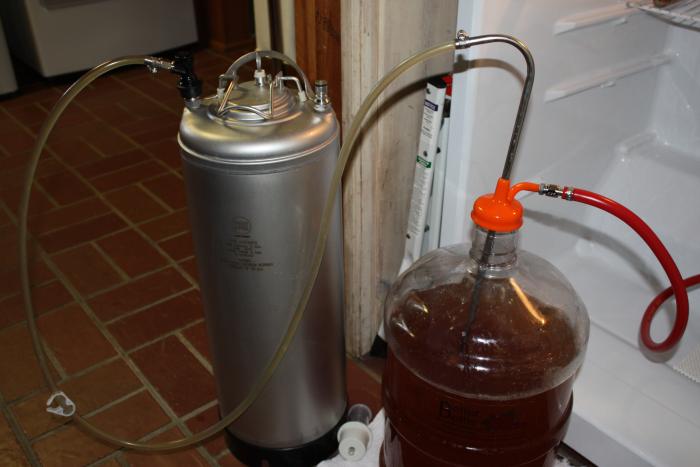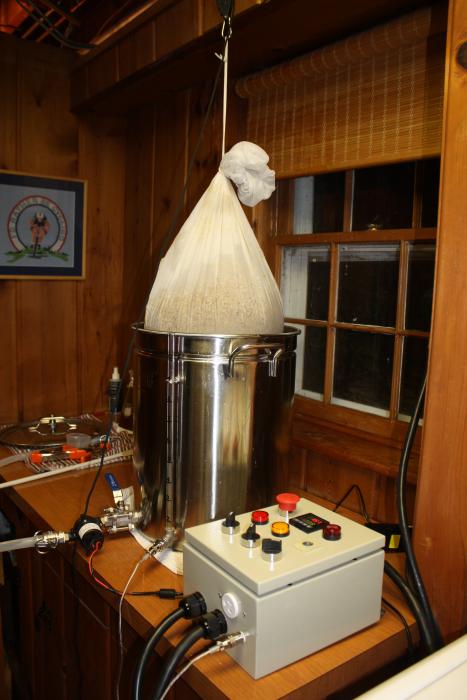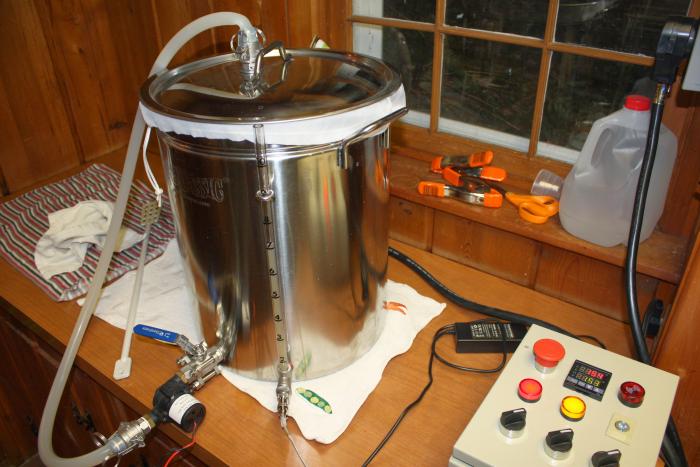I've been wanting to brew a DFH 60min clone since I started brewing. After looking at all of the various recipes, it was apparent that Yooper's was pretty much the consensus clone recipe. I bought the ingredients a few weeks ago but finally made the time to brew last night. I was desperate to get this brew done, because my last batch (an APA) is nearly gone. Beer emergency!
This was my first time using liquid yeast, so I made a starter the night before. I made the yeast starter with 2 oz of DME in 750 mL of water. Boiled for 10 minutes. Transferred to the Erlenmeyer flask and cooled in an ice bath until it was cool to the touch. Shook the flask, and then shook up the yeast tube and pitched. I had to add some wort to the yeast tube and shake to get all of the yeast out. I swirled it by hand periodically and left it on the counter overnight. Didnt see much activity in the morning, but continued to swirl it periodically. I really need to build that stir plate!
Brew Day
Now, for some details about the brew. Recirculation during mash worked perfectly; the mash temps held right on the 153 degree target for the entire time. I was able to do other things during the mash without concern.
After the mash I lifted the bag out (after having a near disaster when it dropped back into the kettle) and squeezed the heck out of it. Even with all of the squeezing, my pre-boil volume was only 5.5 gallons, .75 g short of the predicted 6.25. Pre-boil gravity was 15% brix (1.060 sg). I decided to add .5g of fresh water to bring the volume up to 6 g.
I started the boil at 60% manual on the PID, but backed it down to 40% when it became clear that my boil-off rate was too high. Hop additions were a little off; I added 1 oz of Warrior at the beginning and then mixed the Simcoe and Amarillo Gold together and added a portion every five minutes beginning at the 30 minute mark. I forgot to use the hop sock for the first hop addition, but I used it for the final 30 minutes of additions. I added the Whirlfloc, final hops, and the IC during the final 10 minutes.
I also tested the gravity and realized I would be a little lower than the target of 1.070. My gravity was 1.064, so I needed to gain an additional 6 points. I used BrewCalc on my phone to determine that I would need to add 86 grams of DME to gain 6 points. I used my scale to weigh out the grams and added that to the final 10 minutes of boil. I tested the gravity one final time and it was 1.068, which was close enough.
The chilling process took forever. I used the pump to recirculate the wort while cooling, but the whirlpool it created was anemic at best. I really don't think it sped up the process at all, just added more complexity. I used almost 20 gallons of tap water to bring the wort down to 80 F. There has got to be a way to make the process more efficient. For next time, Ill try circulating ice water once I get to 120 F. Ill need to come up with some fittings to make it easy to switch from tap water to recirculation so there wont be a huge delay while I move hoses around.
Another observation is that Ive got a lot to learn about using the pump and hoses! Its very easy to pump hot wort into your brew area if youre not careful. I also had a near disaster with the bag; the knot I tied around the neck of the bag came loose, dropping the bag back into the pot and splashing hot wort over the entire brew area. Made a nice mess, but didnt really lose much volume. Pretty lame knot-tying for an Eagle Scout!
I ended up with almost exactly 5 gallons in the fermenter. I'm using a Cool-Zone system to control temps. My target temp is 63F, but I pitched at closer to 78F and it was taking quite awhile, even in the Cool Zone, to bring temps down. It was close to 70F when I finally went to bed. I'm using a cooler of ice water to chill the carboy, but I think I'll need to move the pump and water reservoir into the keezer to really make it work.
Finally, here are some pics!



















![Craft A Brew - Safale S-04 Dry Yeast - Fermentis - English Ale Dry Yeast - For English and American Ales and Hard Apple Ciders - Ingredients for Home Brewing - Beer Making Supplies - [1 Pack]](https://m.media-amazon.com/images/I/41fVGNh6JfL._SL500_.jpg)














































